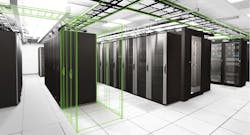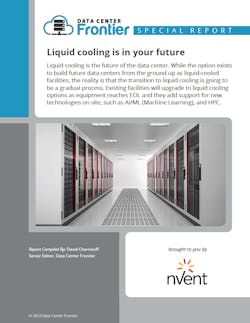Why Liquid Cooling is Critical for Your Data Center's Future
Data center operations are undergoing a fundamental shift as densities increase and operating temperatures rise. As a result, there is a growing need for more efficient, environmentally friendly cooling options. Liquid cooling increasingly fits that bill, but are you prepared to make the shift to the latest technology?
Liquid cooling is in your Future, featuring nVent, explains why liquid cooling is the future of the data center industry – and why it’s imperative that you start getting ready before your air-cooled systems reach their end of life. Check out our recent article series focused on the special report:
Liquid Cooling is in Your Future. Are You Ready?: We kick off our article series by explaining three reasons why liquid cooling is so important. First, air cooling is no longer sufficient to meet changing operational needs. Second, environmental issues and a focus on sustainability mean that operators need to make their facilities more environmentally friendly. Third, there’s the fact that technology will continue to evolve, and whether it be high performance computing (HPC) or artificial intelligence (AI), the demand for more efficient data centers is not going away.
Best Practices for Deploying Liquid Cooling in Existing Data Centers: In this article, we explore the most common types of liquid cooling, including liquid-to-air cooling, liquid-to-liquid cooling, and direct immersion cooling. We also outline the logical progression for deploying liquid cooling solutions in your facility.
How to Evaluate Your Environment for the Move to Liquid Cooling: Our third article in the series shares tips for evaluating your environment to understand how the move to liquid cooling can improve your overall business workflow.
How Liquid Cooling Helps You Prepare for the Future: HPC, AI and machine learning are going to be a big part of the future of business, and that means you’ll need to support those intensive workloads. The real key to sustainable growth is having different options for supporting next-generation workloads. In this article, we discuss why liquid cooling give you the greatest flexibility for the future.
Download the entire report, Liquid cooling is in your Future, featuring nVent, to learn more.

Kathy Hitchens
Kathy Hitchens has been writing professionally for more than 30 years. She focuses on the renewable energy, electric vehicle, utility, data center, and financial services sectors. Kathy has a BFA from the University of Arizona and a MBA from the University of Denver.






